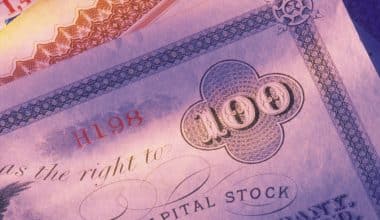A chart of accounts is a fundamental component of any business’s accounting system. It serves as a comprehensive and organized framework that categorizes and records all financial transactions. Whether you are a business owner, accountant, or aspiring financial professional, understanding the importance and structure of a chart of accounts is crucial for maintaining financial health and organizational performance. Here, we define a chart of accounts, what it means in accounting and Quickbooks, the types, numbering, and how to create and implement it in SAP with examples. Ready? Let’s dive in!
What Is The Meaning Of a Chart of Accounts?
A chart of accounts (COA) is an essential tool in financial accounting that helps organizations track and categorize their financial transactions. It is a systematic listing of all the accounts an organization uses to record its financial transactions. Each account in the COA is assigned a unique code or number, which aids in organizing and categorizing the financial data.
The purpose of the chart of accounts is to provide a standardized way of organizing the financial information of an organization. It ensures that all transactions are recorded consistently and accurately, making it easier to analyze and report financial data. Typically, the COA includes categories such as assets, liabilities, equity, revenue, and expenses. By categorizing transactions into these different accounts, businesses can easily track the money flow and make informed financial decisions.
Furthermore, the chart of accounts allows organizations to generate financial statements. This includes the balance sheet and income statement, which provide a comprehensive overview of the organization’s financial position and performance. Hence, COA is a framework for organizing and reporting financial data, facilitating effective financial management.
What Is A Chart of Accounts In Quickbooks?
A chart of accounts is a fundamental component of QuickBooks accounting software. It is essentially a list of the accounts a company uses to track financial transactions and categorize them into meaningful categories. The chart of accounts in QuickBooks is customizable, allowing businesses to tailor it to their specific needs and industry requirements.
In QuickBooks, the chart of accounts consists of various accounts, such as assets, liabilities, equity, expenses, and income. Each is assigned a unique account number and a specific role in recording financial transactions. For example, assets may include cash, accounts receivable, or inventory, while expenses involve utilities, rent, or wages.
By organizing transactions into different accounts, the COA provides a systematic and efficient way to track and analyze the financial health of a business. Ultimately, the chart of accounts in QuickBooks plays a vital role in accurately reporting financial information, preparing financial statements, and making informed business decisions.
What Are The 5 Basic Charts of Accounts?
The chart of accounts is a key component of any accounting system, as it gives a structure to record financial transactions. There are five basic types of charts of accounts that organizations commonly use: asset, liability, equity, revenue, and expense accounts.
#1. Asset Accounts
Asset accounts represent the organization’s resources, such as cash, accounts receivable, inventory, and fixed assets. These accounts show the financial value of what a company possesses.
#2. Liability Accounts
Liability accounts, on the other hand, represent the organization’s debts or obligations. This includes accounts payable, loans payable, and accrued expenses. Additionally, these accounts show the company’s financial obligations.
#3. Equity Accounts
Equity accounts represent the owner’s or shareholders’ interest in the business and show the company’s net worth. Meanwhile, owner’s equity accounts, retained earnings, and common stock are some examples of these accounts.
#4. Revenue Accounts
Revenue accounts track the income the business gets from its operations, such as sales revenue, service revenue, and interest income.
#5. Expense Accounts
Lastly, expense accounts represent the costs incurred by the business during its operations. That’s salaries and wages, rent, utilities, and advertising expenses. In addition, these accounts show the company’s expenditures and reflect the money spent to generate revenue.
Chart of Accounts Numbering
A chart of accounts numbering is an essential part of every organization’s accounting system. It is a systematic way of classifying and organizing financial transactions into different categories for effective and efficient management of financial data. The numbering system provides a unique identification code for each account, allowing easy reference and retrieval of information.
The chart of accounts numbering system generally follows a hierarchical structure, with a series of digits representing different classification levels. For example, the first digit may represent the main category of accounts, such as assets or liabilities. While the subsequent digits can represent further sub-categories within each main category. This numbering structure helps in consistency and uniformity in recording and analyzing financial data across different departments and functions of the organization.
Moreover, it enables easy identification of accounts and facilitates the preparation of financial statements, budgeting, and financial analysis. Overall, the chart of accounts numbering system plays a crucial role in providing a solid foundation for the accurate and systematic recording and reporting of financial transactions in an organization.
How To Successfully Create And Implement A Chart of Accounts In SAP
Creating and implementing a chart of accounts in SAP is crucial for ensuring accurate financial reporting and analysis within an organization. To successfully create and implement a chart of accounts in SAP, you need to follow certain steps.
- Firstly, define the chart of accounts structure. That’s to consider the specific requirements of the organization’s business processes and reporting needs. This involves determining the level of detail required for capturing various financial transactions and grouping them in a logical and meaningful manner.
- Next, configure the chart of accounts in the SAP system. This involves setting up various elements such as account groups, which define the characteristics of accounts within the COA, and defining the number ranges for different accounts. Additionally, assign the appropriate general ledger (GL) accounts to each account group to ensure transactions are well-classified.
- Once the configuration is complete, you can then implement the chart of accounts in SAP by assigning it to the appropriate company code. This involves mapping the COA to the company code in a way that ensures consistency and accuracy in financial reporting. It is important to thoroughly test the chart of accounts implementation to ensure transactions are correct.
In a nutshell, successfully creating and implementing a chart of accounts in SAP requires careful planning, configuration, and testing.
What Is The Difference Between COA And GL?
Chart of accounts (COA) and general ledger (GL) are two fundamental accounting tools for organizing and tracking financial information. While they may seem similar, there are key differences between the two.
The chart of accounts is essentially a list of all the accounts a company uses to categorize its financial transactions. It serves as a comprehensive framework for recording and classifying these transactions, making it easier for businesses to generate financial reports and analyze their financial performance. Typically, the COA includes a series of numbered accounts, each representing assets, liabilities, revenues, and expenses. It allows for the customization of accounts based on the specific organization’s needs.
On the other hand, the GL is a record containing all the individual transactions that have been classified according to the COA. It provides a detailed history of the company’s financial activities and serves as the backbone of the accounting system. Additionally, GL organizes transactions chronologically and is usually in conjunction with the COA to generate financial statements and track account balances.
What Is The Main Purpose Of Creating A Chart of Accounts?
The purpose of creating a COA is to separate expenses, revenue, assets, and liabilities so that customers can quickly understand a company’s financial status.
What Are the Main Chart of Accounts?
The chart of accounts typically includes assets, liabilities, equity, revenue, and expenses. Within each category, there are specific accounts that provide more detailed information about the organization’s financial position and performance.
For example, under the assets category, there may be accounts for cash, accounts receivable, inventory, and property. However, the main COA is essential as it provides a standardized framework for recording financial transactions and allows for accurate and efficient reporting.
What Is Included In A Chart of Accounts?
A chart of accounts typically includes various accounts such as assets, liabilities, equity, revenue, and expenses. Each account has a unique number or code, known as an account code, to ensure consistency and ease of use in the accounting system. Also, COA gives a clear structure for financial reporting, allowing the company to generate accurate financial statements, such as the balance sheet, income statement, and cash flow statement.
In addition, a chart of accounts facilitates the analysis and interpretation of financial data. By organizing accounts into categories and subcategories, it becomes easier for business owners, managers, and financial analysts to identify trends, evaluate performance, and make informed decisions.
For instance, by examining revenue and expense accounts, you can determine the profitability of different products or services. And by analyzing asset and liability accounts, you can assess the company’s liquidity and solvency.
Why Is The Chart of Accounts Important?
A COA is important because it helps businesses track their income and expenses in a clear and organized manner. By categorizing different transactions, such as sales, overhead costs, and payroll expenses, companies can easily analyze their financial data and gain insights into their financial performance.
Furthermore, COA also plays a crucial role in the financial statements. It allows businesses to generate accurate and reliable income statements, balance sheets, and cash flow statements. These financial statements are essential for decision-making, both internally and externally. Businesses can use them to assess their profitability, liquidity, and solvency positions, and make informed financial decisions.
In addition, external stakeholders, such as investors and creditors, usually require financial statements to evaluate a company’s financial health and performance. Without a well-organized chart of accounts, generating these statements accurately and efficiently will be challenging.
Therefore, COA is vital for businesses to maintain accurate financial records, make informed decisions, and meet reporting requirements.
Conclusion
In conclusion, a chart of accounts is a vital tool in financial accounting that enables organizations to track and categorize their financial transactions. It provides a standardized and organized framework for recording and analyzing financial data. Typically, COA includes various categories and codes representing different financial transactions, such as assets, liabilities, equity, revenue, and expenses.






